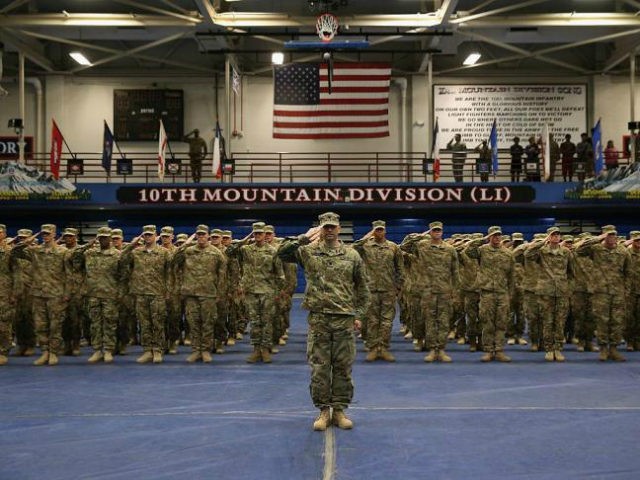The United States will deploy 3,500 American troops to Afghanistan as part of President Donald Trump’s strategy to end the 16-year-old war, bringing the number of U.S. service members there to more than 14,000, according to American officials.
Until the end of August, the Pentagon had been reporting that only about 8,300 American service members were serving in Afghanistan, rather than the recently unveiled figure of 11,000.
As of May, another 6,575 military personnel from 39 NATO allies and non-NATO partner nations were also operating in Afghanistan.
NATO has said it is “fully committed” to Trump’s strategy in Afghanistan.
On August 30, Joint Staff Director Lt. Gen. Kenneth McKenzie argued that the intention of excluding about 2,600 troops was to avoid providing “direct information to the enemy, and sort of preclude telegraphing some of the things that we want to d0.”
Gen. McKenzie revealed that about 11,000 U.S. troops are deployed in Afghanistan, noting, “So we believe it’s not in our interest to actually parse this out in great detail, which is why we’re adopting a single number. And I’m again emphasizing that’s an approximate number, and that’s the number that you’ll get from the department from now on.”
U.S. Secretary of Defense James Mattis told reporters last week that he had approved the deployment orders for some American troops, noting that the United States would unveil the specific number after the Pentagon briefed Congress.
During a closed-door session Wednesday, Chairman of the Joint Chiefs of Staff Gen. Joseph F. Dunford Jr. met with lawmakers to discuss the number of U.S. troops expected to deploy soon.
Speaking on condition of anonymity, U.S. officials claimed that the Pentagon had approved the nearly 3,500 it long been considering sending, bringing the number of American troops to be stationed in Afghanistan to more than 14,000.
It remains unclear what that task of the additional American troops is expected to be and how long their mission will take, given that President Trump has been hesitant to advertise his plans to the enemy.
Breitbart News asked whether President Trump will officially resume the combat mission that former President Obama prematurely declared over at the end of 2014, resulting in a Taliban resurgence and the Islamic State’s (ISIS/ISIL) establishing a presence, but the Pentagon refused to say.
After ending the combat mission, Obama drastically changed the rules of engagement (ROEs), taking away the U.S. military’s authority to aggressively target the Afghan Taliban, forcing them to respond in self-defense only.
Faced with an undeniable Taliban resurgence within a year after ending the combat mission, Obama was compelled to once again allow U.S. troops to offensively target the Taliban, rather than waiting to be shot at first, changing the rules of engagement near the end of his tenure in June 2016.
So far, the U.S. military is still fighting the Afghanistan war under the ROEs approved by Obama in June 2016, although Trump is expected to implement them differently, allowing commanders on the ground to independently make decisions faster, rather than waiting for micromanaging decisions from the White House
However, the Trump administration has yet to implement the new Afghan strategy, meaning the Obama-era authority remains in place.
The Washington Post reported:
While President Barack Obama approved more aggressive airstrikes against the Taliban in 2016, Trump’s new rules of engagement could allow U.S. forces to target Taliban forces faster than they have in the past and attack them even if they are not directly threatening Afghan forces, according to U.S. officials familiar with the possible changes who spoke on the condition of anonymity because the changes had not yet been authorized.
The Obama-era change, dubbed “strategic effects,” allowed U.S. forces to strike Taliban fighters if the airstrike would change the outcome of a ground battle. Trump’s adjustments to the rules of engagement would — in short — allow American aircraft to strike the Taliban wherever they might appear.
According to the U.S. Inspector General for Afghanistan Reconstruction (SIGAR), a watchdog agency, the United States had no clue how many U.S.-funded Afghan National Defense and Security Forces (ANDSF) were serving alongside their American counterparts as of the end of April 2016.
Despite the U.S. investing an estimated $714 billion in American taxpayer funds on security and reconstruction in corruption-laden Afghanistan since the war began in October 2001, the United States government appeared to keep Americans in the dark about what they were getting for their money as far as security troops and reconstruction projects.

COMMENTS
Please let us know if you're having issues with commenting.